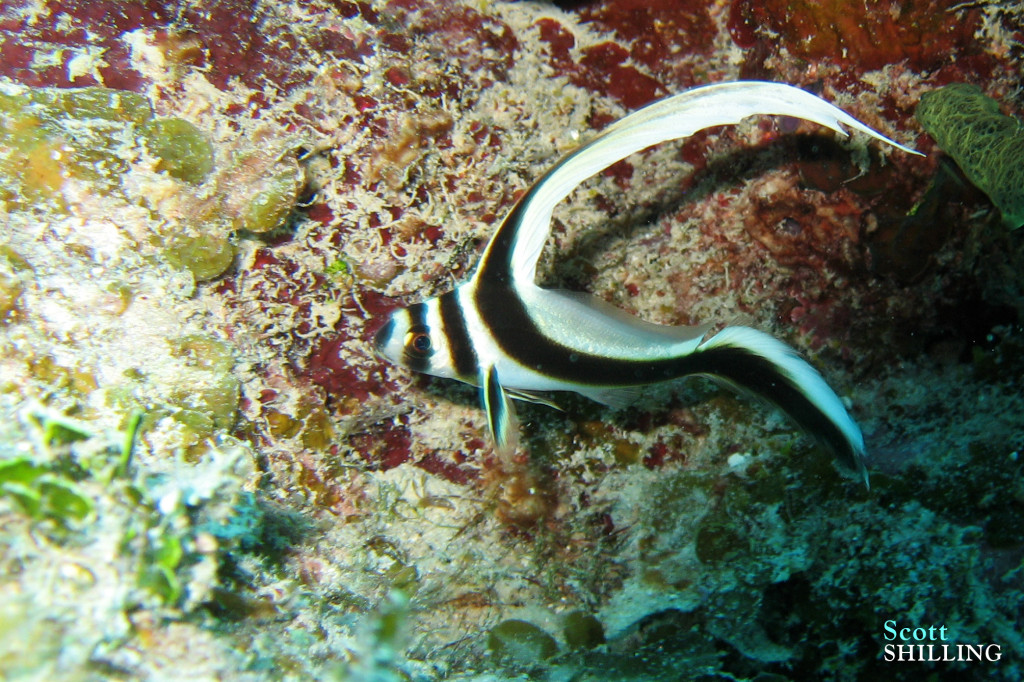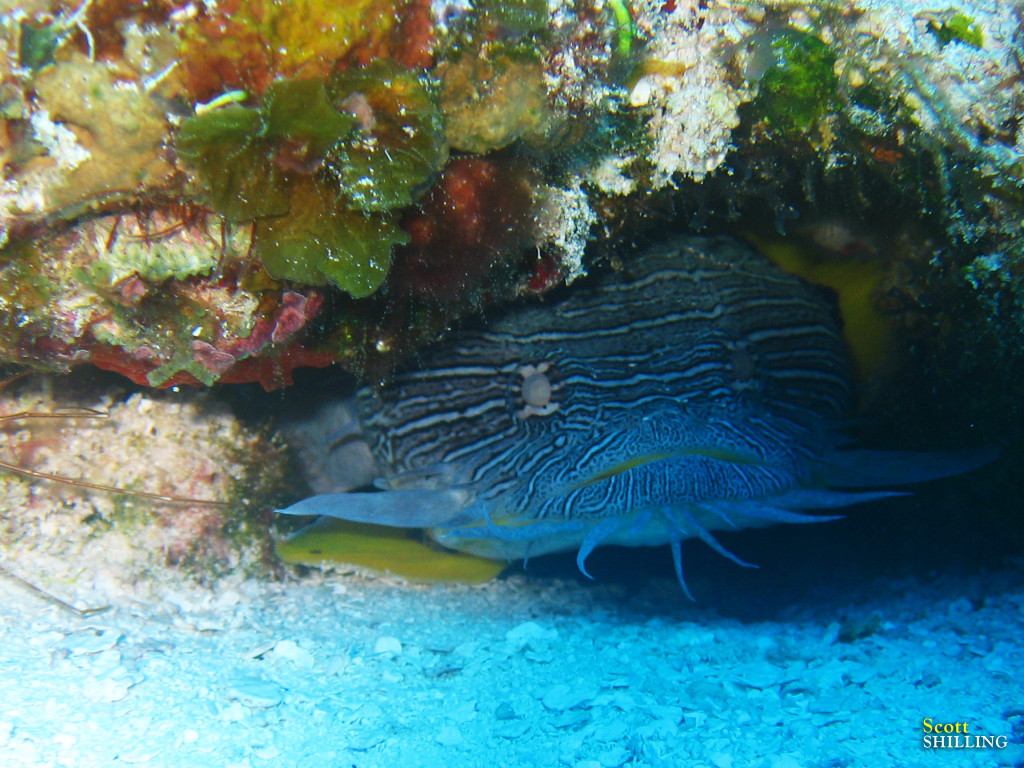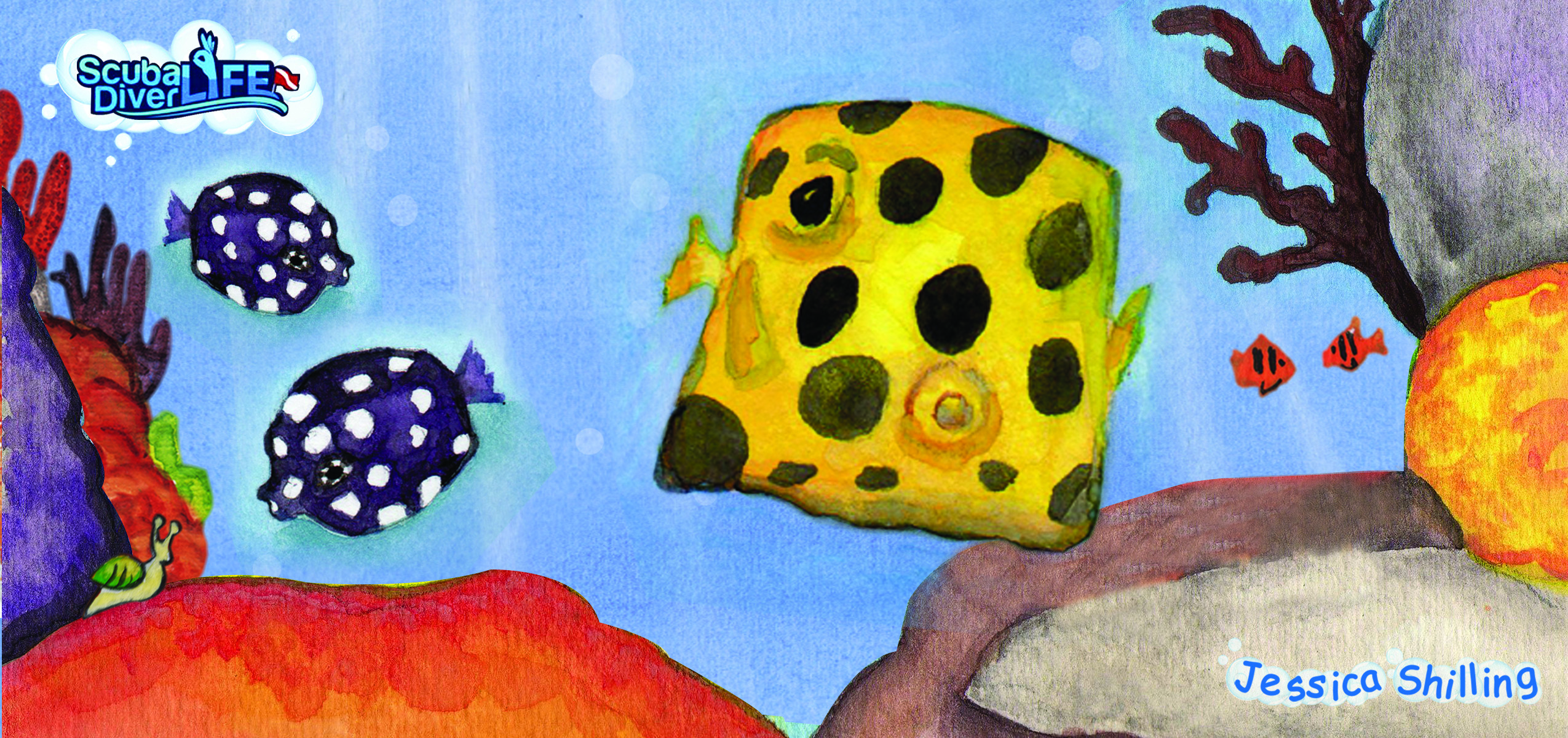It’s typical on a dive to find yourself gazing out into the deep and hoping to see something really big swim by, but don’t underestimate how fascinating and amazing the small creatures can be. Searching for macro marine life in the cracks and small ledges of the reef can leave you delighted with what you’ll can find.
Shake and roll the dice is all you’ll be thinking when you come across a juvenile honeycomb cowfish. They are the spitting image of miniature little dice, buzzing around with their little fins and ever-so-cute button mouth sticking out fro their tiny box-like body. Honeycomb cowfish are entertaining to watch when full grown as well. They grow to be about 20 inches (50 cm) and are found between 20 to 80 feet (6 to 25 m). You need a sharp eye for these guys since they have a bluish tint, which can vary to blend into the background. These fish are most frequently found over sandy areas near the reef, where they blow little jets of water at the sand in an attempt to uncover food.

In my opinion one of the neatest tiny creatures to find on a dive is a juvenile spotted drum. Juvenile drums are very vibrant with black and white stripes and long dorsal fins that flow above and behind them as they swim around in small figure-eight movements. They start at less than an inch (2 cm) and typically grow to be between 6 and 9 inches. The name “drum” was given to them because drum fish can make a low resonance noise similar to the beating of a drum. I have seen juvenile spotted drums smaller than my fingernail in cracks and holes in the reef; they are a real treat to find.

Another very interesting creature to find hidden within the reef is the splendid toadfish. The splendid toadfish is a sluggish, bottom-dwelling species, which is usually found in or around rocky cracks and caves just below coral colonies. They have a toad-like broad and flattened head, and a very wide jaw that bears very small and sharp teeth. Their chin is covered with barbels giving them a bearded look. The face is distinctively patterned with densely packed dark and white stripes and they have strikingly beautiful bright yellow marked fins.
Familiarize yourself before diving
Make sure to research the dive site before you go so that you have a better idea of what to look for once you arrive. You can also ask your divemaster what are the typical creatures to find and where to look. It’s also common for dive centers to have illustrated fish guides for divers to study before the dive. Having this knowledge before a dive makes it even more exciting and you’ll spend the dive spotting critters that you wouldn’t have known to look for if you hadn’t done your homework before hand.
Happy diving!


